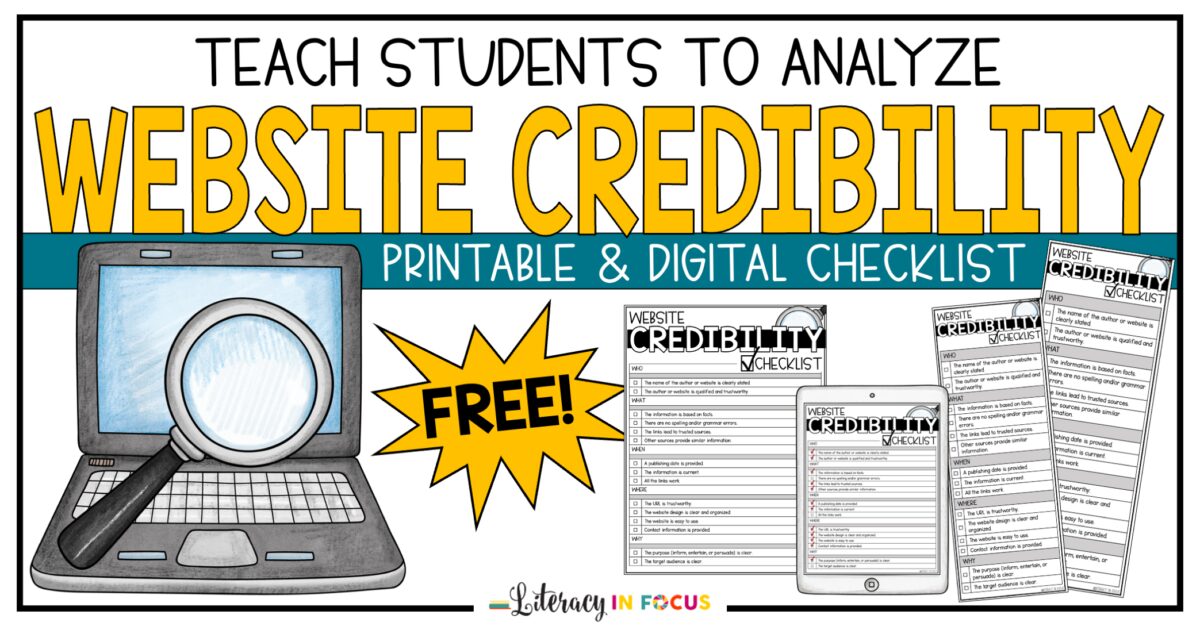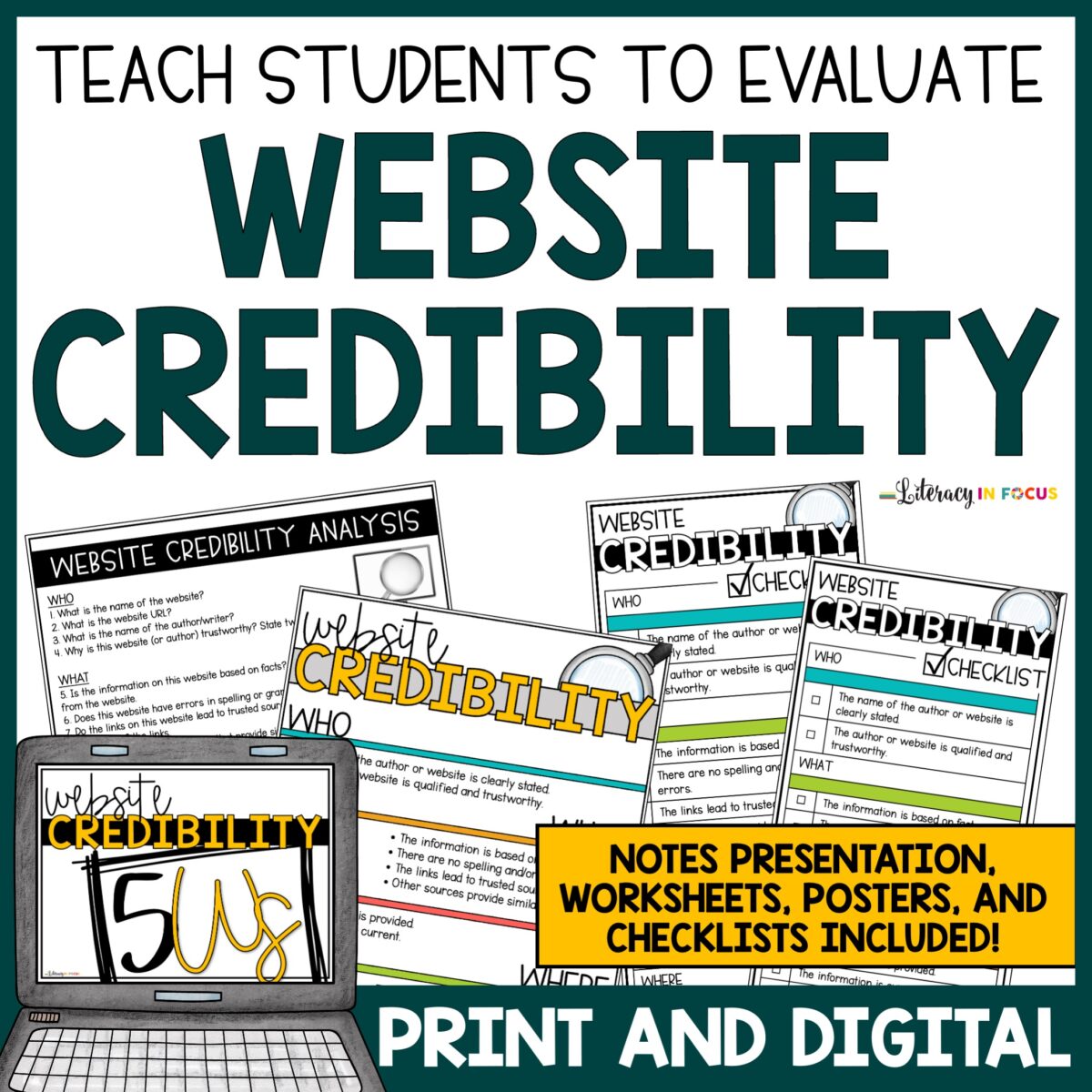
Printable and Digital Website Credibility Checklist
In this era of information overload and fake news, it is now more important than ever to teach students how to identify credible internet sources. The printable and digital checklist explained and linked below guides students through the entire evaluation process. To help students internalize and remember the process, the checklist is segmented into five sections: who, what, when, where, and why. Each section includes criteria for students to look for when determining website credibility. Ideally, students will be able to apply the website analysis skills when researching on their own in the future.
Section One: Who
- The name of the author or website is clearly stated.
- The author or website is qualified and trustworthy.
To complete this section of the checklist, students can look for a company name or logo, an “About Us” page, an author byline, an author bio, industry awards, and author qualifications including certificates and degrees.
Section Two: What
- The information is based on facts.
- There are no spelling and/or grammar errors.
- The links lead to trusted sources.
- Other sources provide similar information.
To complete this section of the checklist, students can look for facts, sources or quotes to support facts, errors in spelling or grammar, typos, links to related content, and other websites with similar information.
Section Three: When
- A publishing date is provided.
- The information is current.
- All the links work.
To complete this section of the checklist, students can look for a publication date, a revision date, a copyright date, and working links.

Section Four: Where
- The URL is trustworthy.
- The website design is clear and organized.
- The website is easy to use.
- Contact information is provided.
To complete this section of the checklist, students can look for the type of URL (.com, .edu, .gov, .org), a homepage or navigation menu, advertising or sponsors, and “Contact Us” information.
Section Five: Why
- The purpose (inform, entertain, persuade) is clear.
- The target audience is clear.
To complete this section of the checklist, students can look for titles and subtitles, pictures or graphics, tone or writing style, word choice, and reading level.
When students have completed their evaluation of the website, they will have gathered enough information to determine credibility.
Want more resources for teaching students how to find credible internet sources? Click here to download the comprehensive printable and digital website evaluation bundle today! It includes student notes, practice worksheets, classroom posters, and full-color credibility checklists.
Website Credibility Teaching Materials




